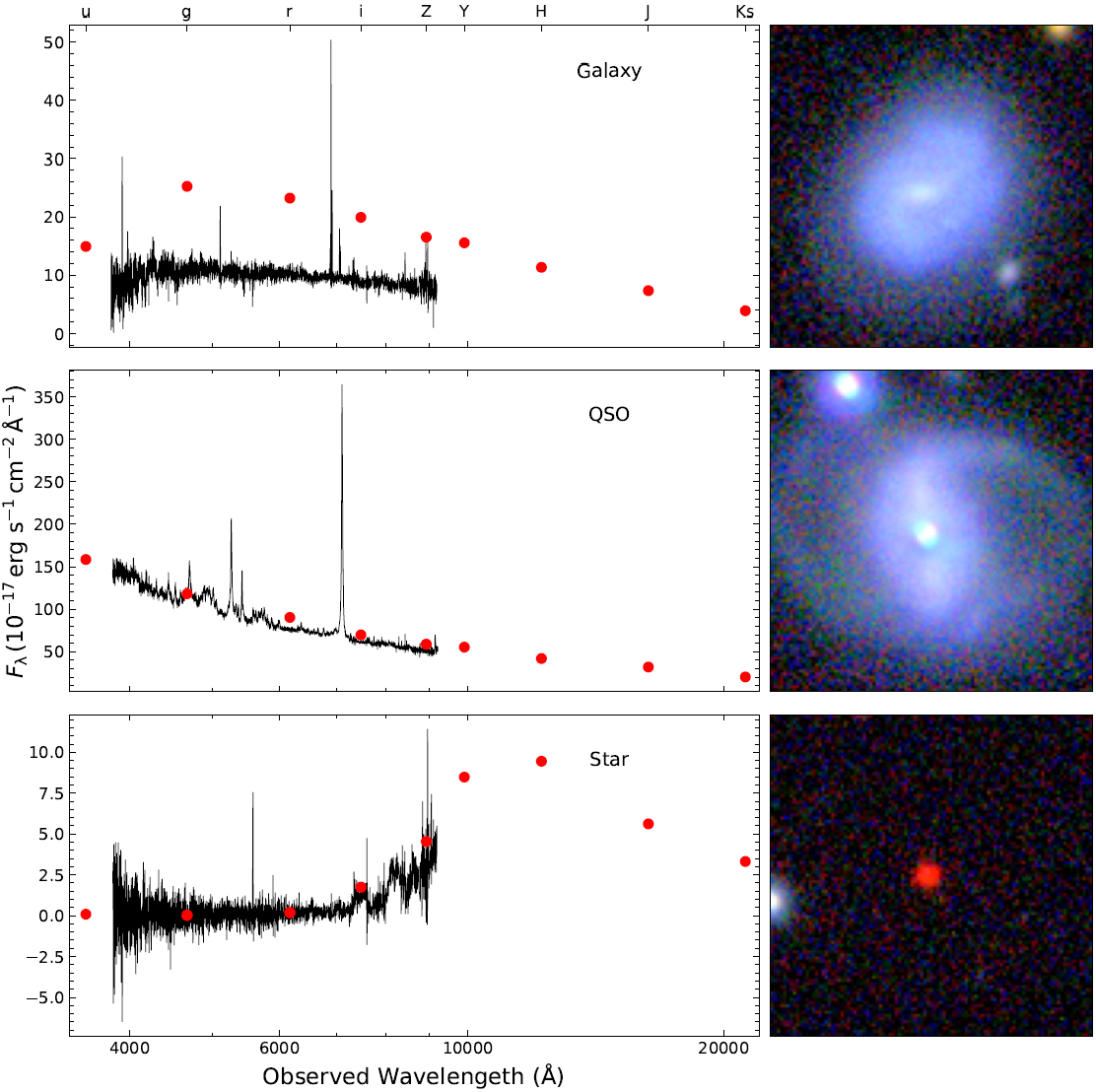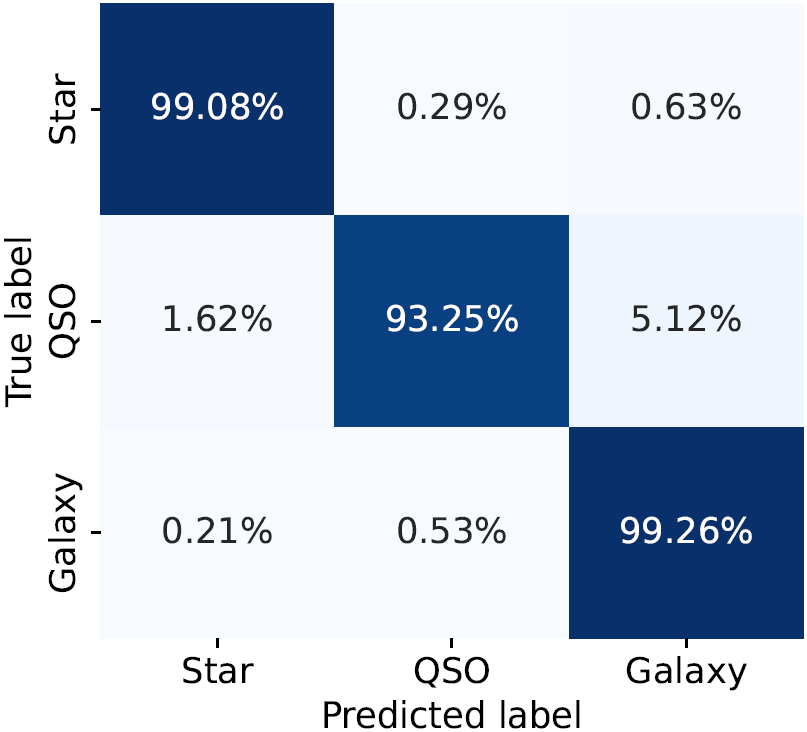The Astrophysical Journal Supplement Series has published a research article titled “Morpho-photometric Classification of KiDS DR5 Sources Based on Neural Networks: A Comprehensive Star–Quasar–Galaxy Catalog”. The study introduces a neural network-based method for large-scale celestial object classification, developed by researchers at Yunnan Observatories, Chinese Academy of Sciences.
Accurate classification of stars, galaxies, and quasars is a fundamental task in modern astronomy, essential for understanding the structure and evolution of the universe. While spectroscopic observations provide high-precision classifications, they are time-consuming and resource-intensive, making it impractical to achieve complete coverage in large-scale sky surveys. Conversely, photometric imaging is more efficient and sensitive to fainter objects. However, classification based solely on morphology or spectral energy distribution (SED) features suffers from degeneracies. For example, high-redshift quasars and stars both appear as point sources in images, making them difficult to distinguish.
To address these challenges, the researchers developed a multimodal neural network model capable of processing both morphological and SED features simultaneously. By integrating these complementary data sources, the model achieved high classification accuracy across stars, quasars, and galaxies. It was trained using spectroscopically confirmed sources from the Sloan Digital Sky Survey Data Release 17, providing a robust foundation for classification. Applied to the fifth data release of the Kilo-Degree Survey (KiDS), the model successfully classified over 27 million celestial sources brighter than r = 23 magnitude across approximately 1,350 square degrees of sky.
The model's exceptional performance was validated through rigorous testing. When applied to 3.4 million Gaia sources exhibiting significant proper motion or parallax—characteristics typically associated only with stars—the model correctly identified 99.7% as stellar objects. Similarly impressive results were achieved with the Galaxy And Mass Assembly Data Release 4, where 99.7% of sources were accurately classified as galaxies or quasars. Notably, the research revealed the model's ability to correct misclassifications in existing catalogs. Random inspections revealed that some objects, visually identifiable as galaxies but mislabeled as stars in SDSS, were correctly reclassified by the neural network.
This study provides valuable technical insights for future large-scale multi-band sky surveys, including those to be conducted by China’s Space Station Telescope. As these projects unfold, they are expected to generate observational data for billions of celestial objects, which will pose significant challenges for both classification efficiency and accuracy. Deep learning-based multimodal methods offer a powerful solution for fast, automated, and high-precision classification in this data-rich era.
In the future, the team plans to further enhance the model’s adaptability and apply it to larger and deeper survey data, continuing to advance the shift in astronomical data processing from “quantity” to “intelligence.” This will help build high-quality astronomical databases and explore the laws governing cosmic evolution.
This work was supported by the National Key R&D Program of China, the National Natural Science Foundation of China, the China Manned Space Program, and the Science and Technology Program of Yunnan Province.

Figure 1:Differences in SEDs, spectroscopic features, and spatial morphologies among various types of celestial objects. From top to bottom, the examples shown correspond to a galaxy, a quasar, and a star. The spectroscopic data are from SDSS, while the SEDs and image data are from the KiDS. Image by FENG.

Figure 2: Confusion matrix of the classification results based on a sample of 20,000 celestial objects. Image by FENG.
Contact:
FENG Haicheng
Yunnan Observatories, CAS
E-mail:hcfeng@ynao.ac.cn